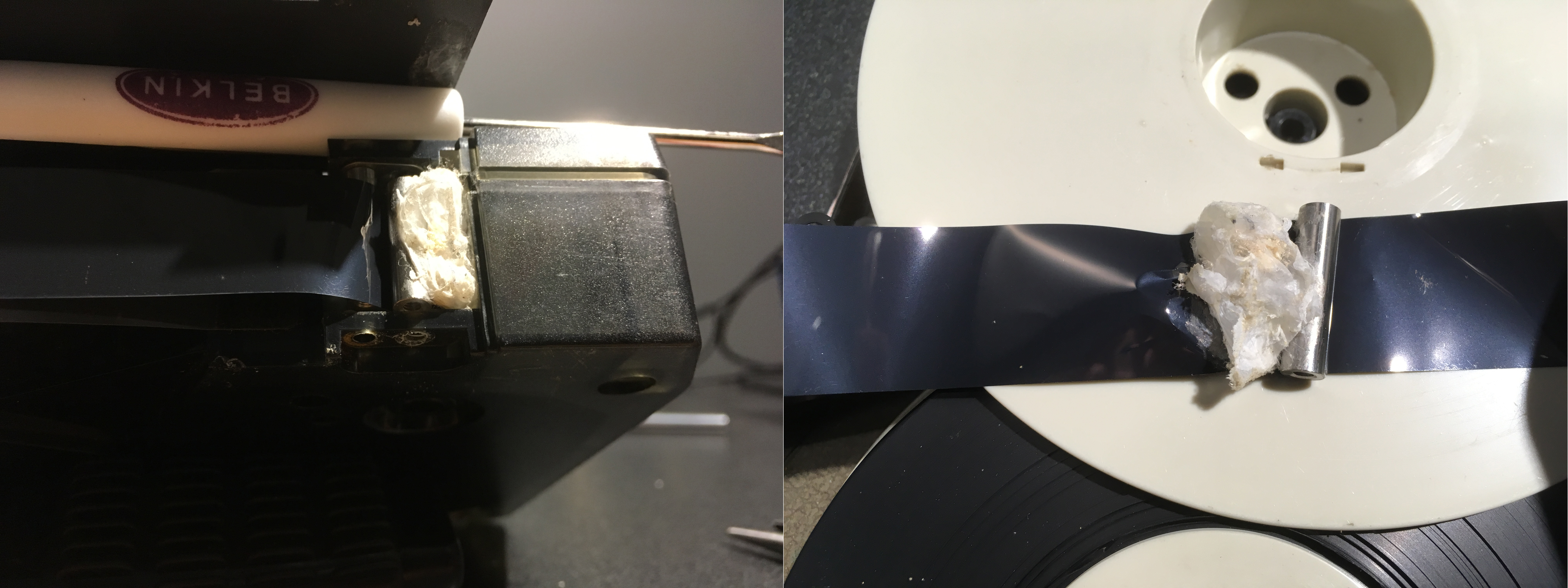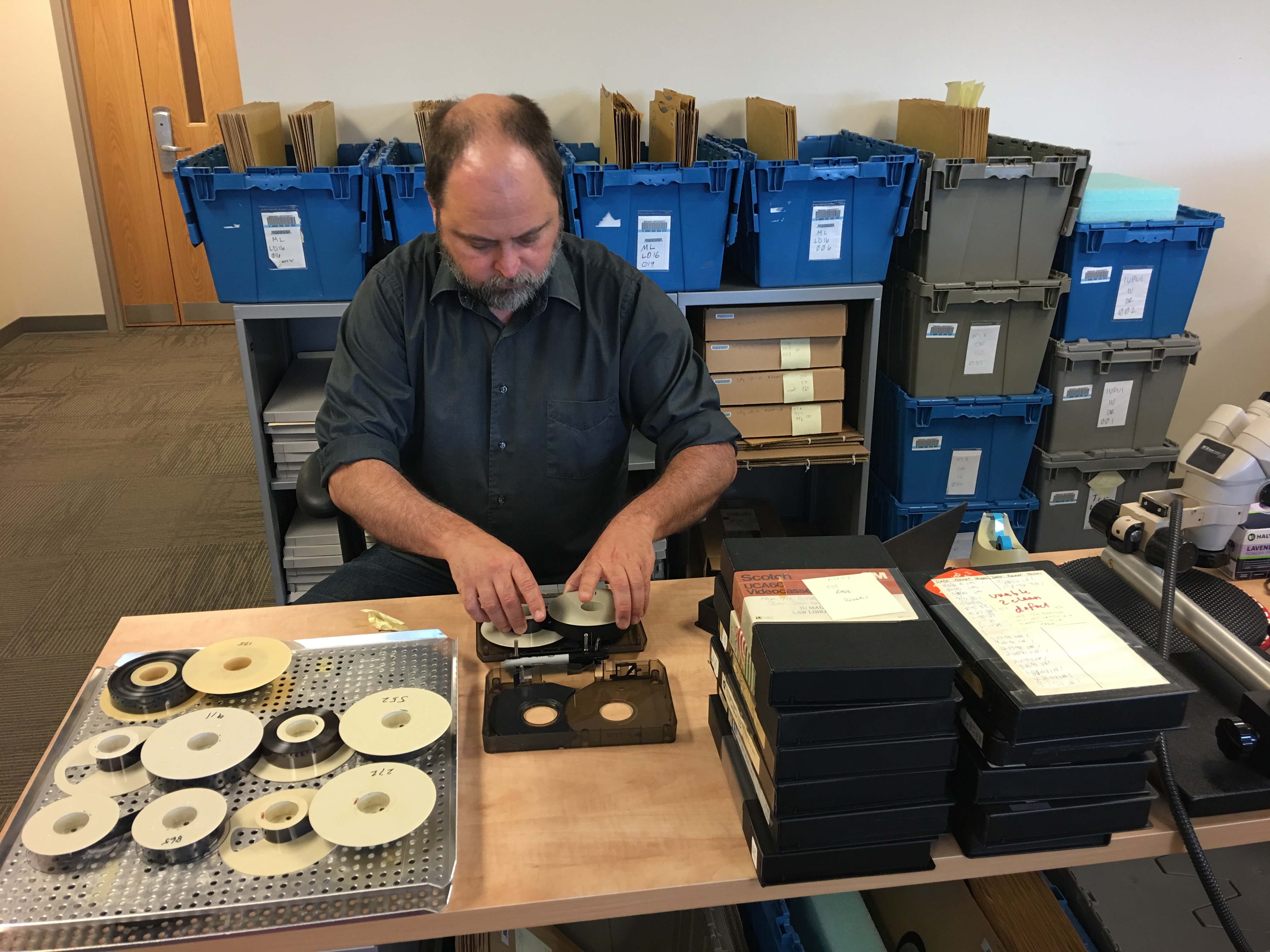by Jonathan Richardson, Audio Visual Specialist, Media Digitization and Preservation Initiative and Rob Mobley, Video Preservation Engineer, Media Digitization and Preservation Initiative
Here at MDPI we deal with our fair share of decaying media. One of the most problematic video tape formats is U-matic, also referred to as ¾”. Any video preservation engineer who has been in the business long enough can attest to this. Our partners at Sony Memnon digitized the bulk of the U-matic tapes via a parallel transfer workflow, but tapes that their operators had difficulty playing were sent to IU Media Digitizaton Studios (IUMDS). IUMDS is charged with digitizing recordings that require special care or extraordinary intervention, so we get the worst of the worst. We have lovingly come to refer to our shelf of the most problematic U-matics as our Island of Misfit Tapes.

Of the approximately 15,500 U-matic tapes delivered to Memnon for digitization, 1,100 or about 7% failed to make it through the digitization process for a myriad of reasons. It is up to us to determine why they failed, take remedial steps to correct any problems and make the best transfer we can.

Our process for tackling the difficult tapes begins with a basic problem identification or triage set of checks:
- We first determine if the physical tape is still intact. If broken, did the break happen at the beginning or end of the tape leader or in the middle of the program? This is a fairly easy problem to fix by opening the tape and splicing with a special splicing block custom-made to hold the ¾” inch tape straight and even. We trim damaged areas of tape and make a clean-butted splice, taking special care to apply the tape on the side facing away from the spinning scanner of the playback VTR.

- The next step is to clean the tape. We use an Indelt tape cleaner on most U-matic tapes. The Pellon tissue within the cleaner removes any loose residue or foreign matter from the surface of the tape. Multiple cleanings are often necessary if head clogs persist.

- If the initial cleaning doesn’t do the trick, additional inspection is needed to determine if the tape is displaying characteristics of sticky-shed syndrome. Sticky-shed is created by the deterioration of polyethylene binders in a magnetic tape, which hold the oxide coating to its plastic carrier. The binders break down over time due to the absorption of moisture in a process frequently referred to as hydrolysis. A tape with sticky-shed will respond sluggishly to tape transport functions in a VTR, making squealing or chirping sounds and leaving a dark residue behind on any surface that it comes in contact with, especially the video heads.

Sticky-shed symptoms can occur immediately at the head of a tape, or they may show up 20, 30 or 40 minutes into a program. In these cases, as more tape is spooled onto the take-up reel, harm can be done to the tape as well as the tape deck if playback isn’t halted. Once sticky-shed is confirmed, the tape should be immediately ejected from the VTR and scheduled for baking. Once a tape has been baked, it is necessary to run it through the cleaner at least once, sometimes twice, before attempting to digitize again.

- We have three scientific ovens specifically for baking audio and videotapes. In our experience, we have found that three U-matic tape brands are the worst offenders relative to sticky-shed problems—Sony, Ampex and Agfa. The Agfa brand tapes are by far the most troublesome for us with Ampex a close second. We have experimented with different combinations of baking durations and temperatures, and currently we prefer to bake at 120°F for 48 hours with convection fans running for a more even penetration of heat into the wrap of the tape. We have found that taking the reels out of the shells is the best way to make sure that the baking process is successful. Leaving the tapes in the shells risks the warping and damaging of the shell or, more importantly, the tape guides. After baking, another cleaning is done and digitization is attempted again. We are currently experimenting with even longer bakes for tapes that haven’t responded well to the two day bake.
The successful migration of problem U-matics requires many man-hours of patient testing, treatment and re-trying, but one by one, day by day we are able to liberate another video from the Island of Misfit Tapes.
Wondering if your lab processes 3/4″Ampex 197 videocassettes manufactured in 1988-89? From 1985-1990 a physician friend and I produced a weekly public health cable access television series broadcast on community access channels in west Michigan. We’re presently hoping to convert the 3/4″ tapes to digital format for research use by students and the public.
This past month I have been attempting to copy the programs thru an analog to digital converter for connected to hard drive that converts the video to Apple Quicktime.mov format. Many of the tapes transfer with no difficulty. However, the “sticky” syndrome effect has unfortunately appeared on many of the 3/4″ cassettes, mostly those recorded on Ampex 197 tape.
Does your lab process 3/4″ videocassettes from groups outside of the university? I’ve been reading the articles about “baking” the tapes in a dehydrator. Your videotape conservation approach seems far superior to trying to improvise baking the videocassettes myself.
Many thanks for your input and assistance. All the best! Steven Schrier, M.A. Kalamazoo, Michigan